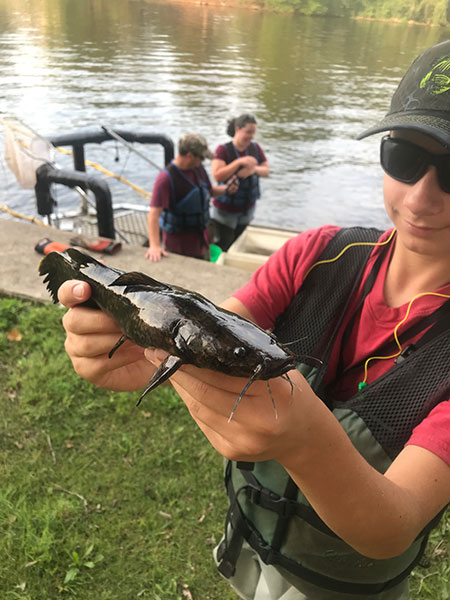By Louie Stout
 Flathead catfish
Flathead catfish
The fact that flathead catfish have appeared in Indiana sections of the St. Joseph River may be good news to some anglers, but Dar Deegan is concerned.
Although the flatheads are native to the Mississippi River system – waters south of Michiana – they aren’t native to the St. Joe.
That concerns Deegan, aquatic river biologist for Elkhart and South Bend.
“They have been in the Michigan sections of the St. Joe but we haven’t encountered any up here during the 25 years we’ve been surveying – until last year,” said Deegan, who samples river fish regularly to evaluate the health of the river and its fish populations.
Biologists netted three that were 12 inches and knows of one 16 incher caught by an angler.
He suspects they were planted there by anglers.
Although the river has other native species of catfish, the flatheads are more voracious feeders.
They grow big – up to 100 pounds in the south – while the average size of full grown adults run 20-30 pounds in this region. That means they eat a lot to get to those sizes.
“They are an apex predator at the top of the food chain,” Deegan explained. “When they get big, they have no problem taking down small bass, walleyes and big sunfish – and lots of them. We could see some potential changes in the food web and it could impact bass and bluegill populations.”
Flatheads, he added, are more prone to targeting sunfish.
“It’s going to take a while to see long-term impact,” Deegan said. “We already have a bunch of non-native species. We’re going to watch the fish population for changes; there could be some positives occur, but adding another predator could upset the balance of the fishery.”


